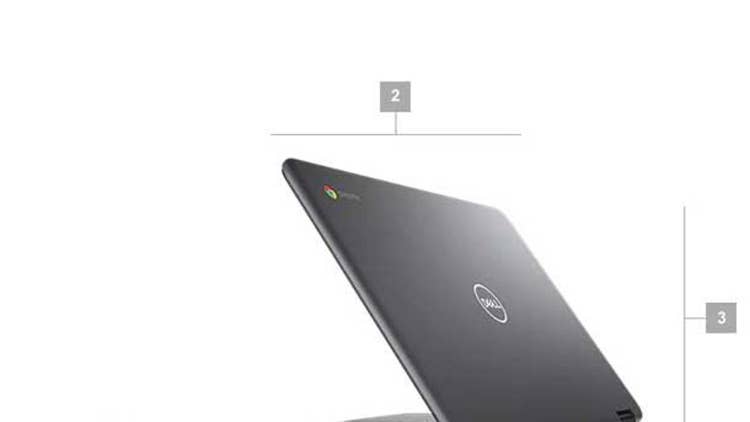2021 IT Channel Sales On Tap To Exceed Last Year’s $93B: NPD Group
Return-to-work environments, software deployment and a backlog in hardware orders are all contributing factors to an increase in enterprise channel sales in the first half of 2021, according to the market research firm.

If everything goes as expected, business-to-business channel sales this year will surpass the $93 billion in sales generated in 2020 – a year marked by the onset of the COVID-19 pandemic and a significant adjustment by firms to the new normal, according to research firm NPD.
“We expect B2B tech channel sales will exceed last year’s revenue,” Mike Crosby, director and B2B technology industry analyst for The NPD Group, told CRN. “B2B technology channel sales continue to outperform last year as demand for notebooks and tablets, along with software and cloud provide strong growth momentum. Barring any major setbacks tied to the pandemic or any additional worsening of current supply chain and availability, expectations are that revenue totals for 2021 will surpass 2020.”
Return-to-work environments, software deployment and a backlog in hardware orders are all contributing factors to an increase in enterprise channel sales in the first half of 2021, according to NPD.
Many companies also looked to ramp up security capabilities to protect both in-office and at-home work spaces as well as offer more hardware to its employees.
U.S. B2B technology channel revenue surpassed $50 billion in sales, according to the NPD Group’s B2B Distributor Track and Reseller Tracking Services. Those results are up four percent from pre-pandemic levels in the first half 2019. NPD is also anticipating to surpass sales in 2020, which totaled at $93 billion.
Through June of 2021, security software sales increased by eight percent, making up 26 percent of all software sales in the channel. Storage and data protection software grew by eight percent and hardware revenue saw a 10 percent increase.
Here’s what drove channel sales in the first six months of 2021 and where Crosby is placing his bets in 2022.

Growth Due To Economic Stabilization, Supply And Demand
Crosby told CRN that there was a lot of pent-up demand for technology purchases “because a lot of companies took a position of wanting to batten down the hatches during the COVID-19 pandemic.
To minimize risks, many took a conservative approach when it came to spend as it wasn’t clear when the economy would begin to recover or when that stabilization would occur.
“Because we saw that rush of demand so quickly, supply chain was already flexed about as far as could go and it’s struggling again to meet that accelerated rate,” Crosby told CRN.
What also drove sales was the continuation of the digital transformation wave. A lot of companies, according to Crosby, were prepared and took advantage of that early.
“Then a lot of other companies were still a little bit laggard relative to their planning,” he said. “I think it caught some people off guard and I think you’re starting to now see those plans formalize and then start that effort. That’s going to be a continuing driver of demand.”

The ‘Education Piece Was Massive’
A large driver in channel sales was education when the majority of school districts across the country went remote. Schools had to deploy Chromebooks and virtual instruction platforms almost overnight. And while many schools went virtual in 2020, the pent up demand for software and hardware spilled over into 2021.
“What’s interesting about education is that especially during that time frame, the majority of the funding typically comes from state and local tax revenues that funds 90-plus percent of the budget,” Crosby said. “Because those economies were so shut down for so long, the federal government stepped in with the Relief Act, and all the additional funding was going to work at trying to deploy technology and closing that technology gap. There’s still a pretty good gap remaining but certainly a lot of that pent up demand continues because a lot of that supply never even made it to the school districts.”
The bulk of that investment was in grades K-12 as there was such a huge technology gap. Kids were immediately pivoted to home and most of them didn‘t have broadband or any reasonable technology to access their assignments or instruction.
“We saw that big impact early, but then we saw that as that supply chain tried and struggled to catch up, we saw some of those deployments of technology extend out,” Crosby said. “A lot of schools, even though they placed their orders, never really received much in the way of what they needed.”

With Remote Learning Comes Security Concerns
As we near 2022, and look ahead to 2023, schools are looking ahead as far as online instruction and requirements for data security.
“For larger school districts that are trying to manage to both remotely and in-class instruction, data security is a big part of that spend as well,” said Crosby.
As school districts backlog hardware demand as well as catch up on software implementation, the next step is ramping up digital security measures.
“I think schools were fairly naive and had fairly minimal security protocols in place,” said Crosby. “But now there’s more online, more of this capability, more visibility, more cloud based, school districts are beginning to understand [that they] can‘t be held ransom. Just like ransomware has occurred within the corporate side, we’re seeing that with larger school districts where they lockdown the entire structure.”

Hybrid Work Models Will Continue To Drive Sales
With a hybrid work environment that looks to be here to say, a lot of employees are looking at how to mirror the technology they have in office to that of their home office, according to Crosby.
“We’re going to see the benefits of some redundancy purchasing to make sure that employees having everything in their home office that they did in their work office so that they can be their most productive selves,” he said.
While there’s still a lot of learning going around hybrid work and learning models, Crosby believes that a lot of companies have an idea what that hybrid structure will look like going forward.
“But until they really get in and start to pressure test and understand what really works well or what doesn‘t work, I think you’re going to see some benefit of that of optimization as people get a little bit of time under their belt and understand what’s really working for them and what’s not,” he said.

Continued Growth In Hardware Sales
There still continues to be more demand than supply, Crosby said, specifically around notebook products.
“What is interesting is we’re seeing a lot of products being sold at a higher ASP (average selling price),” he said. “As people are buying higher-end configurations, we’re seeing companies buy up higher and higher in technology.”
Now that mobile devices can be a primary workstation, at times replacing desktops, companies are adopting more and more mobile platforms. Because of that, NPD also seeing faster refreshes.
“There’s a faster refresh of technology, so we’ll see more of, ‘I need more processing power. I need the things that are going to make me my most productive self,’” he said.
Other pressures are due to costs of raw materials, manufacturing and transportation. With notebooks, there’s still a supply and demand imbalance, Crosby said.
“It’s going to take probably into the first half of 2022 to where we start to see some of these backordered categories or our high demand categories start to normalize a little bit,” he said. “We have a very good momentum and very good demand signals. You see manufacturers doing everything they can to continue to accelerate on what’s going on.”

What’s Coming Down The Line For Channel Sales
As the federal government passes the infrastructure package, Crosby believes there will be “a lot of investment being made in technology.”
“I see a lot of inroads coming now on automation and AI, and certainly cities are adopting some of these technologies just for more efficient, effective ways,” he said.
Cloud migration continues to be a big accelerator, he said, as companies large and small are starting to understand the benefits of cloud more and the level of agility it provides. He also predicts companies investing in devices-as-a-service where hardware and software can be combined.
“It’s an interesting dynamic where you can deploy, very quickly, configured devices but you don’t have to have a capital expenditure yet,” he said. “It’ll be more of an operating expense, so it gives companies operating flexibility, but they don’t have to manage with the configuration.”
As companies were trying to just survive and stabilize their business during the pandemic, now they’re shifting to a return back to growth.
“What we found is there’s less people doing more things, so they need more scalability,” Crosby told CRN. “Where they don’t have the money to invest in a broad technology deployment, they can implement it quickly and can scale it depending on what their consumption needs are.”

High Focus On Security
While remote workforces were deployed in early 2020, and continue to stay, a lot of people initially said, ‘Okay here’s what we need to do,” according to Crosby.
“It was kind of a triage of deployment and we saw a nice thing with that,” he said.
While he thinks, for the most part, it worked fairly well and companies saw high levels of productivity, now IT teams are catching up.
“They’ve had a chance to do some analysis and now understand where they have some weak areas,” he told CRN. “Now they’re reinforcing those weak areas. It’s more of just experience and being better educated about what they need not only today but tomorrow. Now are we building in that infrastructure that we need to be able to be that.”

Healthcare Is Also A Huge Driver Of Sales
“In healthcare, pre-2019 you saw the acceptance of telehealth was fairly low,” Crosby said. “But then, post 2020 and now 2021, the level of acceptance is much higher.”
What’s also higher is the level of education around telehealth, and the level of simplicity around facetiming or simply calling a physician through a telehealth app.
“People are much more comfortable, so you’re seeing that technology skyrocket,” he said.
As that technology takes off, security is going to be hypercritical in healthcare as medical officer, and patients, are sending over health files, statistics, data and images through those portals.
“All of that now becomes really, hyper secure,” he said. “They’ve got to be able to have not only something that scales but something that also protects the integrity of who sees that data and when it’s being accessed.”

“Anticipating Good Growth” In 2022
As supply catches back up and stabilizes towards the end of the first half of 2022, and things “normalize a little bit,” Crosby predicts to see sustainable growth as companies return to offices, or adopt a heightened hybrid work model.
“It’s not going to be growing at the rate that it is now, but I think we’re still going to see good positive growth around some of those core areas that we‘ve continued to see now,” Crosby said.
He anticipates to see many offices being completely reconfigured as he has seen many looking at new office spaces and asking how to integrate technology as well as still offer a work-from-home environment.
“We can keep seeing things progress the way they are, and improving, and as economies continue to keep revving up and growing, and I think we look in really good shape,” he said.